All the ways Nioh differs from Dark Souls, and why you should care
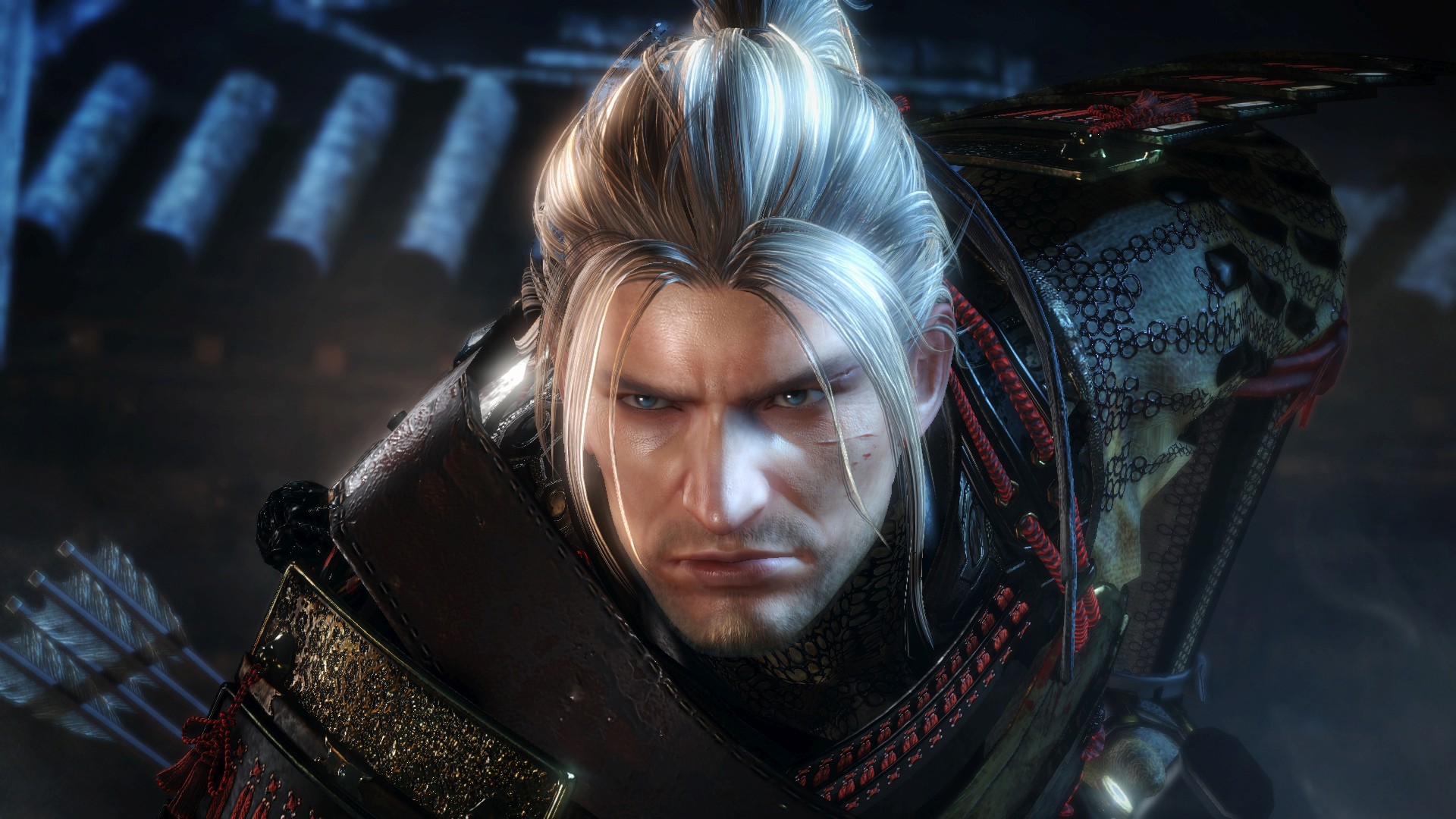
One glance is all it takes to see that Nioh, Team Ninja's upcoming action RPG for PS4, borrows heavily from the famed Souls series developed by FromSoftware. The UI is nearly identical, its third-person combat is equally intense, there's tons of stylish gear to collect, and even the weakest enemies can cut you down if you don't stay focused. But there are subtle differences bubbling beneath the surface, beyond the fact that Dark Souls deals in medieval high fantasy while Nioh takes place in a demon-ridden version of 17th century Japan.
If you didn't get the chance to fight your way through the entirety of the sizable, now-delisted Nioh Beta demo, you might've missed some key changes to the Dark Souls formula that make Nioh its own beast - ones that may or may not sway your decision to commit to this grueling-but-rewarding adventure against imposing odds. So here are the highlights of Nioh's alterations to the standard Souls framework - and my take on whether or not they feel like welcome upgrades or curious quirks.
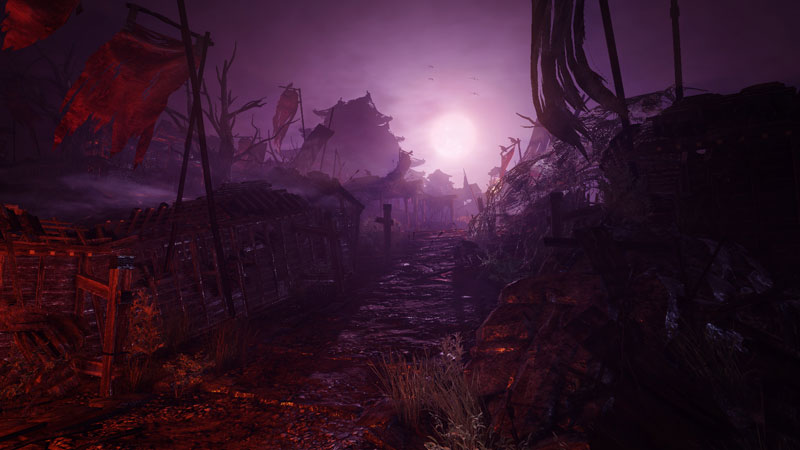
Individual levels, rather than one open world
We'll start with the big one. A lot of why people adore the Dark Souls games so much - particularly the first Dark Souls - is that their worlds enthrall you with an awe-inspiring sense of scale. Each area is meticulously crafted to be a series of interconnected paths, so you're constantly finding useful shortcuts, or stepping into a vista you once spotted far off in the distance and assumed to be mere backdrop ambiance. It’s inherently rewarding to explore every nook and cranny of a Souls game, uncovering all the ways the environment cleverly overlaps and segues into familiarity territory.
In contrast, Nioh is divided up into separate stages of varying size, similar to the layout of Demon's Souls. The larger levels still mimic the smart design of Dark Souls, with shortcuts that help retain your progress in the unfortunate, very likely event that you die. They even have clever mechanisms that go beyond the simplicity of lowering a ladder, like kicking over a bucket of water to extinguish a previously impassable flame. But other levels are so constricted that they have no need for shortcuts, as you're only moving between three small clearings, or simply spawn almost directly at a boss fight (at least in the demo).
Is it a change for the better? Not so much. While it's convenient that you can warp to whatever area you feel like from the overworld map after you've exited a level, it ends up making Nioh's setting seem disjointed. In exchange for level variety and ease of access, you lose out on the sensation of setting foot in a massive, cohesive world, and the surprises that come with discovering how it's all pieced together.
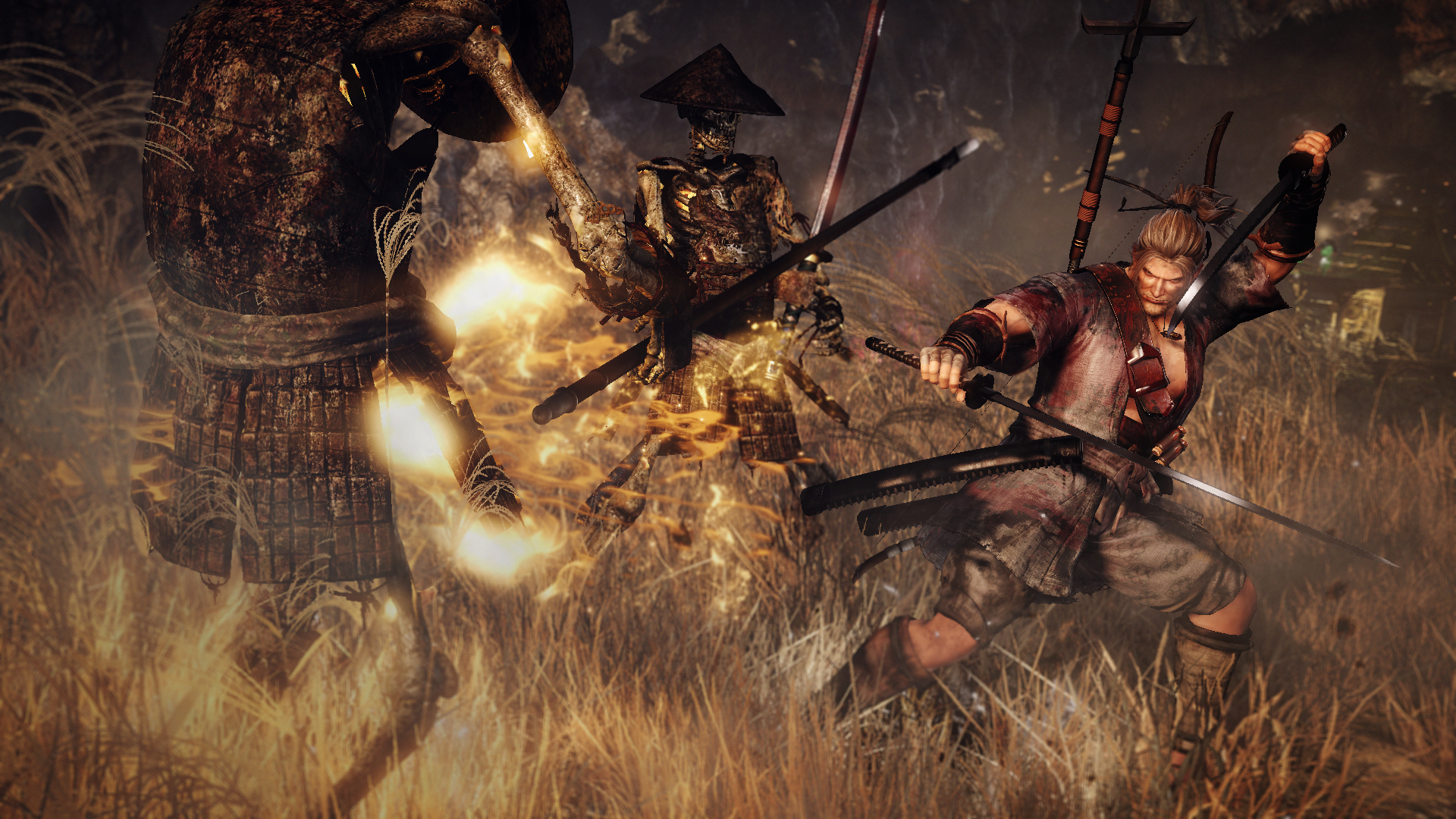
Instead of stamina, you need to focus (on) your Ki
Managing your stamina is a fundamental component of Souls combat, forcing you to consider your actions carefully lest you render yourself briefly defenseless during the heat of battle. Nioh's take on the stamina mechanic is called Ki, and it's a hell of a lot more complicated. First off, you're able to recover your Ki mid-fight by using a Ki Pulse, which is similar to the active reload mechanic from Gears of War. If you properly time a Ki Pulse with a tap of R1, you'll regain a huge chunk of stamina to keep you in fighting shape - but if you fail or attempt a Ki Pulse too early, you'll miss out on stamina recovery and get winded extremely quickly as a result. It adds an extra layer of rhythm atop the already-demanding combat, which is definitely tricky to get accustomed to.
In addition to all that, there's are also three different fighting stances - high, middle, and low - to choose from during combat, each one with its own set of distinct moves for every weapon type. It's a bit like the way Bloodborne's weapons could switch forms, but, y'know, with one extra. And wouldn't you know it - stance-switching is also activated by tapping R1 and a face button, meaning you can (and should) time your Ki Pulse and stance changes to happen in tandem. That's a lot to remember when an enemy is swinging a katana inches from your face.
Sign up to the GamesRadar+ Newsletter
Weekly digests, tales from the communities you love, and more
Is it a change for the better? Depends on whether or not you're eager to develop a new kind of combat mastery. The Ki Pulse and stance-switching makes the skill ceiling on Nioh's combat quite a bit higher than Souls, and if you can master its incredibly demanding systems, you should be able to execute a ballet of blades akin to the graceful, hectic combat of Team Ninja's own Ninja Gaiden. That said, not everyone will take kindly to the extra layer of complication atop already an already high difficulty, especially when accurate Ki Pulse timing is all but required to progress through the increasingly tough encounters.
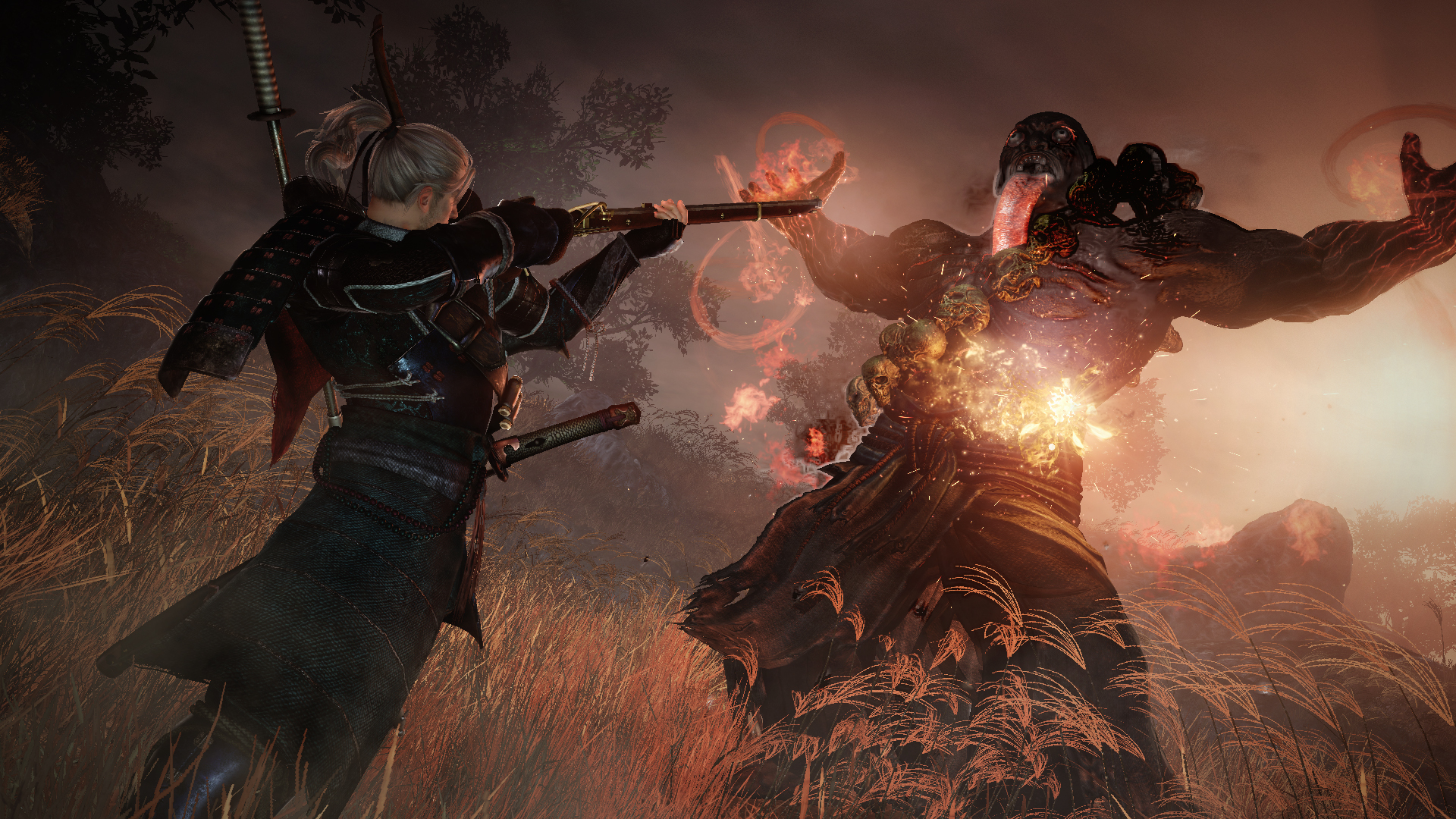
You can actually aim your ranged weapons
Trying to play a Souls game as a purely ranged archer is... challenging. To reliably hit enemies from afar, you need to be locked on to them - and that's only possible when you're close enough that your prey can easily charge you after you've fired your first shot. But Nioh makes aiming your bow a breeze. By holding R2, you'll switch to an over-the-shoulder view that lets you easily line up your shot, complete with a reticule that signifies the severity of your shot's damage if it connects (the color of the outer circle) and whether or not it'll be a headshot (if the inner dot is red or not).
Don't worry: the ease of pointing your bow, musket, or cannon(!) doesn't turn Nioh into a third-person shooter. Ammo is still relatively scarce, so you won't be mowing down every enemy before they can see you. But if you're patient and prudent when lining up your targets, you can easily take out weaker enemies in a large group, or put a major dent in the health of a beefier enemy from afar. As always, scoring a one-shot-kill headshot feels real nice.
Is it a change for the better? Absolutely. Souls aiming feels downright archaic by comparison, and anything that opens up more flexibility in your playstyle should be considered a good thing.
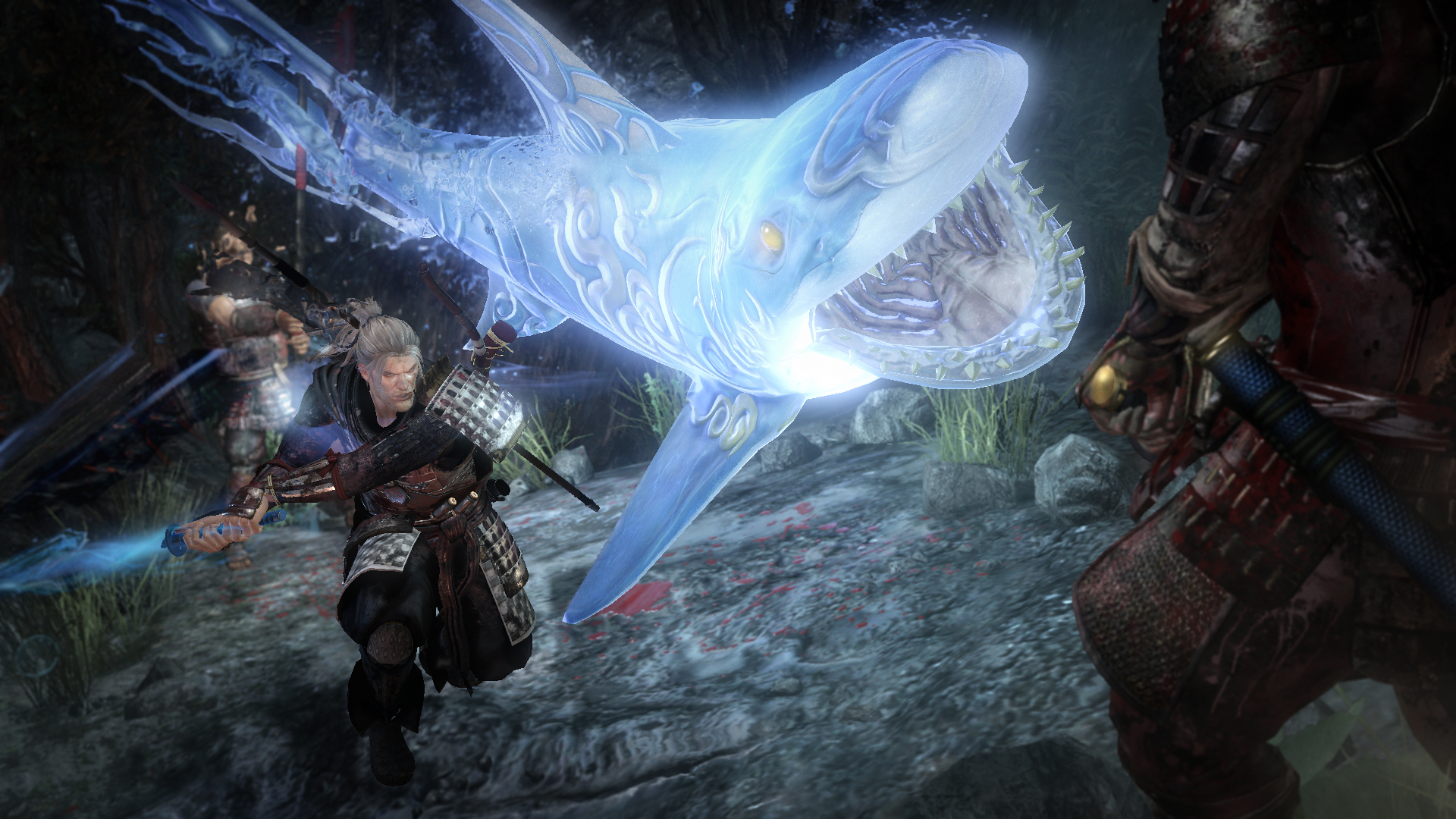
Your Guardian Spirit lets you go (sort-of) Super Saiyan
Everybody loves a trusty animal companion, and Nioh gives you plenty of options via a menagerie of mystical creatures called Guardian Spirits. These beasts - including a wolf, shark, bird, dog, and bull - don't fight by your side, but they provide a series of bonuses depending on which one you have equipped. And their true power can be unleashed via the Living Weapon mechanic, in which your Guardian Spirit fuses itself to your armament to provide extra elemental damage and temporary invulnerability.
It's not completely overpowered: the Living Weapon gauge fills relatively slowly as you kill enemies, and taking hits while in this form greatly reduces its already short-lived duration. Essentially, if you use Living Weapon at the wrong time or get too aggressive with it, it's useless. But when you need to clear out a group of enemies or take down a particular tough baddie, your Living Weapon can turn a daunting challenge into a manageable one.
Is it a change for the better? So far, I'm leaning towards 'no'. It's certainly encouraging to have Living Weapon at the ready so that you can fight back against an ambush, but it feels like it could cause weird highs and lows in the level pacing that wouldn't otherwise be there. Having your Living Weapon effect knocked off in a heartbeat feels awful, as does farming enemies to earn it back if you feel like you need the extra boost of strength to progress. That said, Guardian Spirits are quite cool conceptually, and it's adorable how they wait by your grave whenever you die.
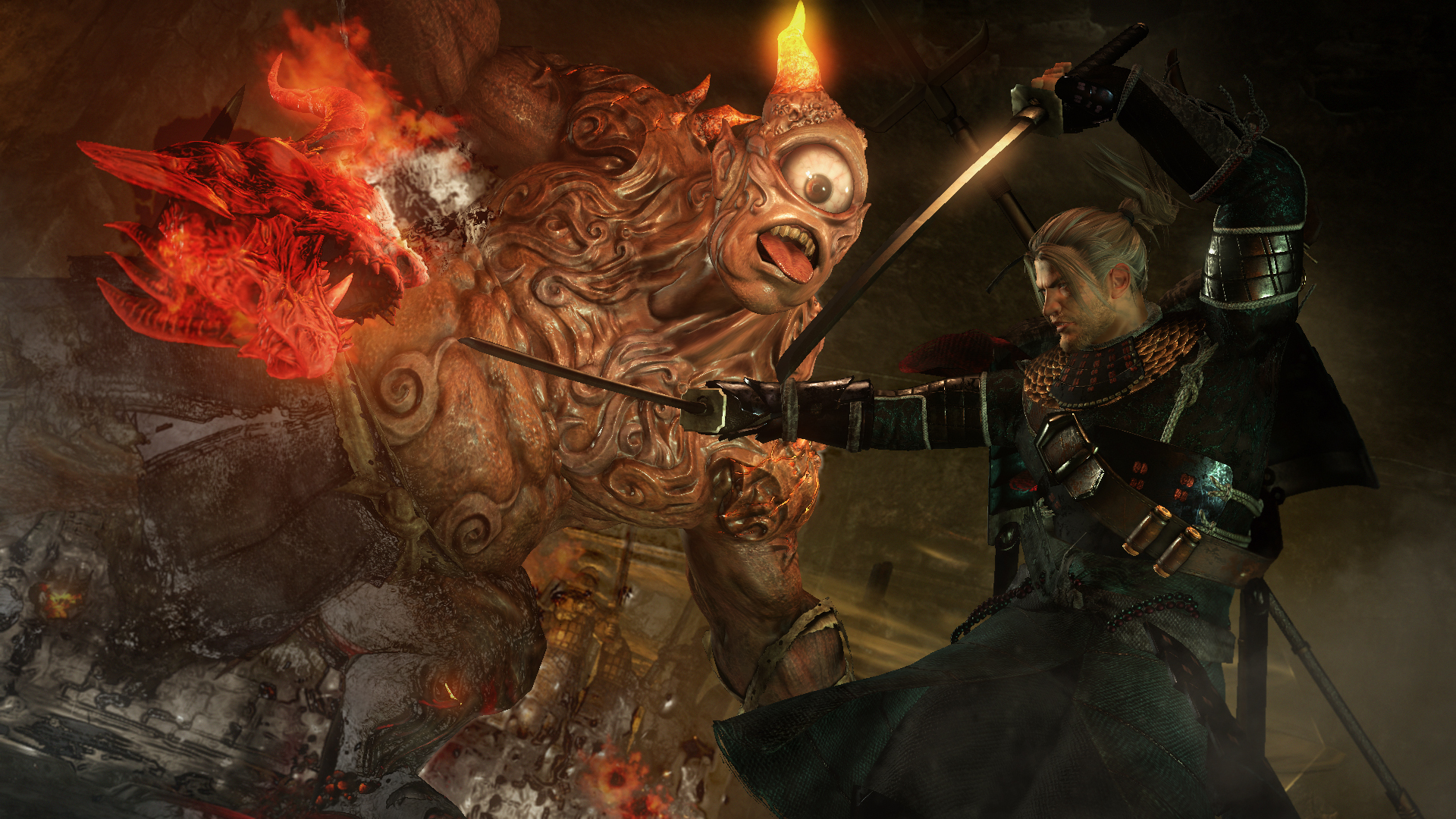
Your protagonist is predestined
The fact that each Dark Souls hero is mute gives players incredible freedom to shape their protagonist as they see fit. Male or female, young or old, beautiful or hideous - it's all up to you, and how keen you are to play with character creation sliders. Not so in Nioh, which has everyone playing as the same one man: William Adams, a real-life English navigator who Team Ninja interpreted as a blonde, dashingly handsome Irish samurai.
William can strike up conversation with one of the friendly NPCs he encounters, whose ranks include many familiar historical figures from throughout Japanese lore. And though you can customize William's attire through the many gear sets there are to equip, it's unlikely that you'll be able to play as anything other than an incredibly buff, fish-out-of-water foreigner in this strange, Yokai-infested land.
Is it a change for the better? Perhaps. Plenty of people love Ninja Gaiden's Ryu Hayabusa for his stoicism and merciless fighting style, and that kind of reference point is only possible when everyone's playing through this incredibly difficult games as the same one character. But honestly, I'm going to miss the sense of bonding I had with my custom character, as well as admiring (or laughing at) the creations of other players who felt similarly compelled to share their personalized hero.
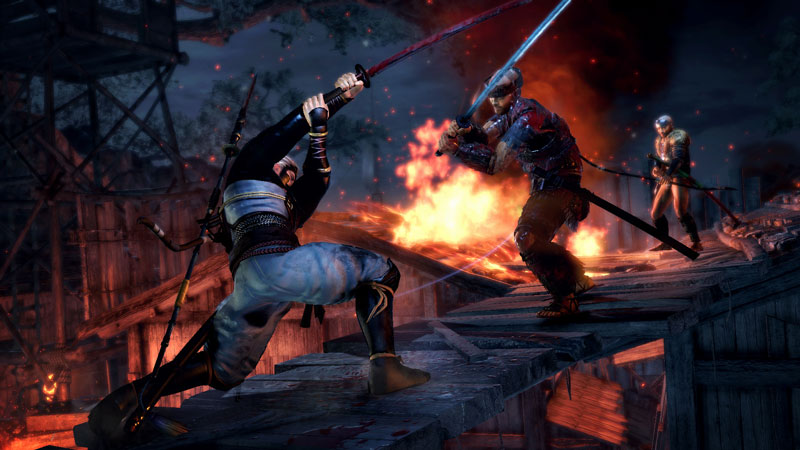
No jumping allowed
Team Ninja must have an affinity for Woody Harrelson and Wesley Snipes, because it makes William adhere to the same rules: White Men Can't Jump. Leaping across chasms isn't easy in the Souls games, but it's certainly possible, and oftentimes it's the easiest (or only) way to reach items placed in precarious places. But because there's no jumping Nioh, you'll have to find some way to fall down or climb up to any items that seem like they're just one running jump away. If you're a Souls vet, it'll definitely take some getting used to.
Is it a change for the better? Not particularly. Perhaps Team Ninja is using the lack of jumps to guide its level design, so there's no way to bypass obstacles or reach distant items unless you're supposed to be able to. But, like the sectioned-off levels, this ultimately feels like a restriction of your exploration, and watching William fall directly downward after running off a cliff honestly looks a bit goofy. That said, even without the ability to jump, you can still pull off downward slashes on unsuspecting enemies below.
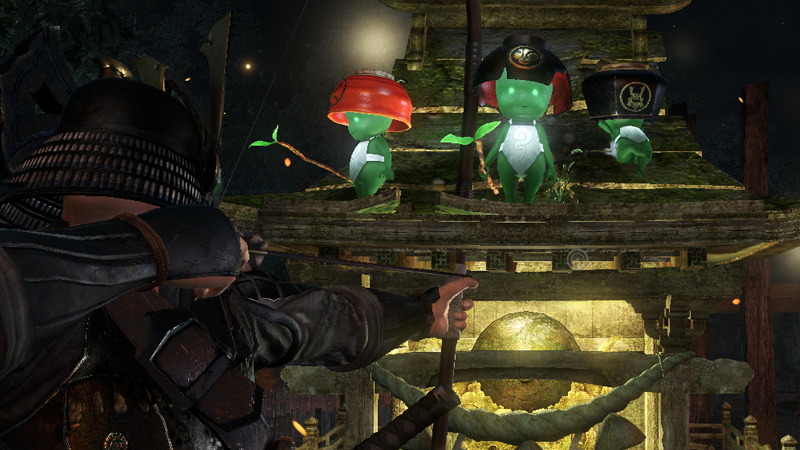
Playing hide-and-seek with those cute little Kodama
Dark Souls never had anything this delightfully cute. Nioh uses shrines as health-restoring, enemy-respawning checkpoints in place of Souls' bonfires, and these shrines have a population of their own. Little green forest sprites called Kodama occupy each shrine, and it's impossible not to love their little cherubic faces or charming animations as they dance around the rooftop of each save point.
They're not just their for show, either. By paying a small sum of gold, you can activate a Kodama's Blessing, which gives you a persistent bonus chance on drops (extra health items, more weapons or armor, etc.) that can assist your progress significantly. And the percentage chance will increase depending on how many Kodama you've located out in the world. These little guys are hiding in some pretty out-of-the-way places, but their distinct giggling gives you the perfect hint that one's nearby. Also, you don't have to worry about accidentally killing them when your sword cuts through the barrel they're hidden behind - they'll just phase out of existence for a sec.
Is it a change for the better? For sure. The overworld map tells you how many Kodama are hiding in each level, so you don't have to go looking for something that was never there to begin with. The functional benefits of the Kodama's Blessing are another great way to tailor Nioh to your preferred playstyle, and seeing all your Kodama amassed on each shrine is an absolute delight.
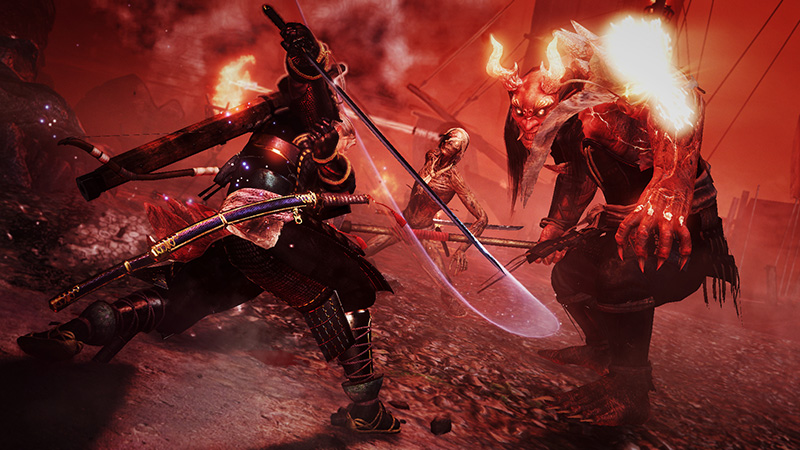
Twilight Missions ramp up the challenge for greater rewards
In case Nioh isn't difficult enough, you'll have the opportunity to replay levels you've already beaten in arduous Twilight Missions. The size and layout of the level will be exactly the same, but it'll be bathed in blood-red light, and the enemy types will be completely remixed to be even more difficult and punishing than they were before. This is, in all but name, Hard Mode - in a game that's already far more challenging than most of the competition.
Interestingly, Twilight Missions rotate in and out of availability depending on the day, so that gauntlet you threw yourself into yesterday might not be there today. If you can overcome the ramped-up difficulty, the rewards are suitably grand, as you'll earn much better gear to help you conquer even greater adversity.
Is it a change for the better? Yes, given the way Nioh is structured into individual levels. It's a sensible way to encourage players to revisit areas they've already beaten, and greatly extends the life of the game for any masochists/experts seeking the ultimate challenge. Giving players even more mountains to climb is always welcome when they're optional.
Lucas Sullivan is the former US Managing Editor of GamesRadar+. Lucas spent seven years working for GR, starting as an Associate Editor in 2012 before climbing the ranks. He left us in 2019 to pursue a career path on the other side of the fence, joining 2K Games as a Global Content Manager. Lucas doesn't get to write about games like Borderlands and Mafia anymore, but he does get to help make and market them.



